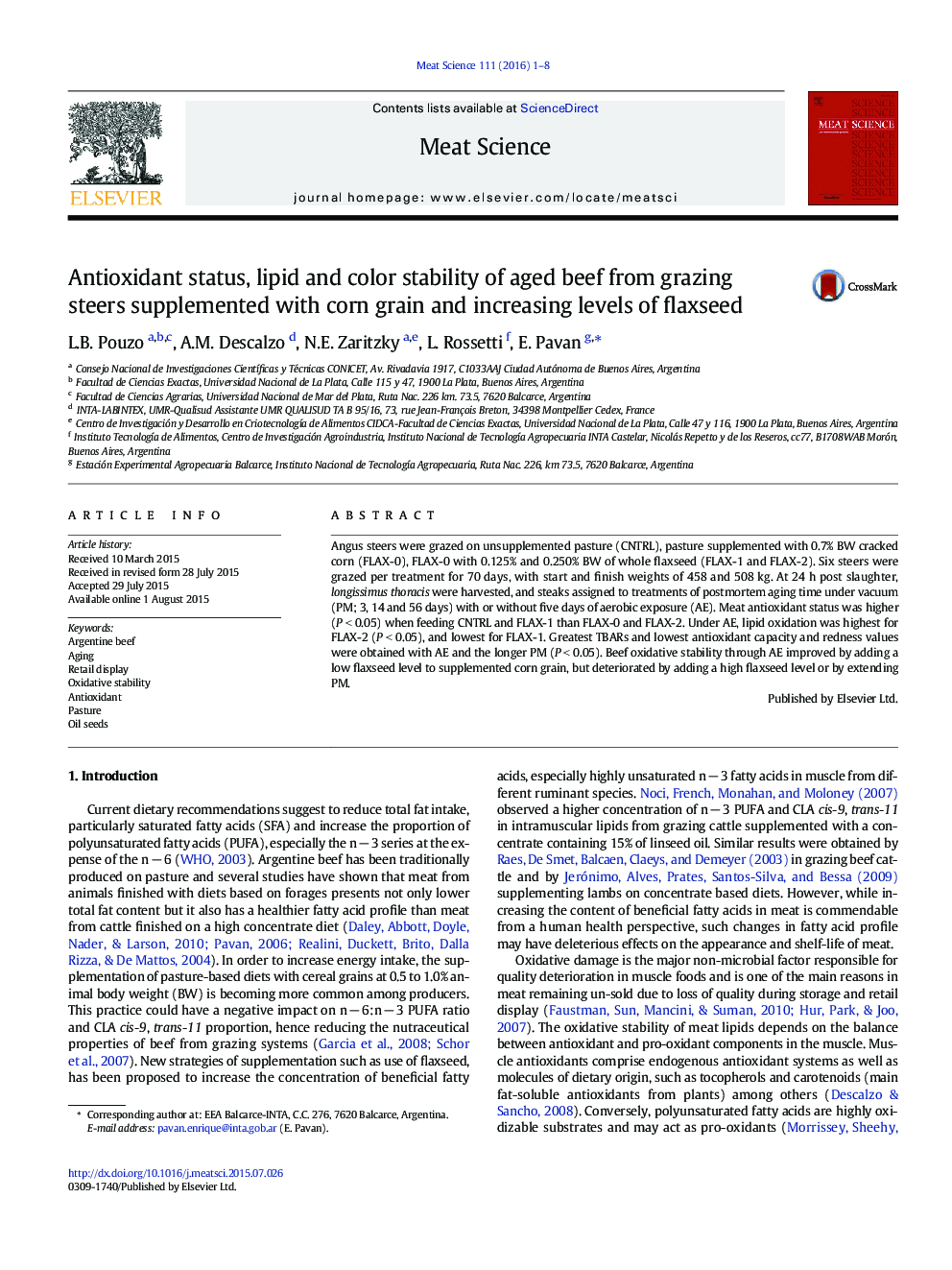| Article ID | Journal | Published Year | Pages | File Type |
|---|---|---|---|---|
| 2449566 | Meat Science | 2016 | 8 Pages |
•Adding low flaxseed levels to pasture diets improves beef antioxidant status.•Adding high flaxseed levels to pasture diets increases beef oxidation.•Vacuum aging promoted longissimus thoracis lipid oxidation during aerobic exposure.•Meat redness decreased as antioxidants declined thru aging and aerobic exposure.
Angus steers were grazed on unsupplemented pasture (CNTRL), pasture supplemented with 0.7% BW cracked corn (FLAX-0), FLAX-0 with 0.125% and 0.250% BW of whole flaxseed (FLAX-1 and FLAX-2). Six steers were grazed per treatment for 70 days, with start and finish weights of 458 and 508 kg. At 24 h post slaughter, longissimus thoracis were harvested, and steaks assigned to treatments of postmortem aging time under vacuum (PM; 3, 14 and 56 days) with or without five days of aerobic exposure (AE). Meat antioxidant status was higher (P < 0.05) when feeding CNTRL and FLAX-1 than FLAX-0 and FLAX-2. Under AE, lipid oxidation was highest for FLAX-2 (P < 0.05), and lowest for FLAX-1. Greatest TBARs and lowest antioxidant capacity and redness values were obtained with AE and the longer PM (P < 0.05). Beef oxidative stability through AE improved by adding a low flaxseed level to supplemented corn grain, but deteriorated by adding a high flaxseed level or by extending PM.
